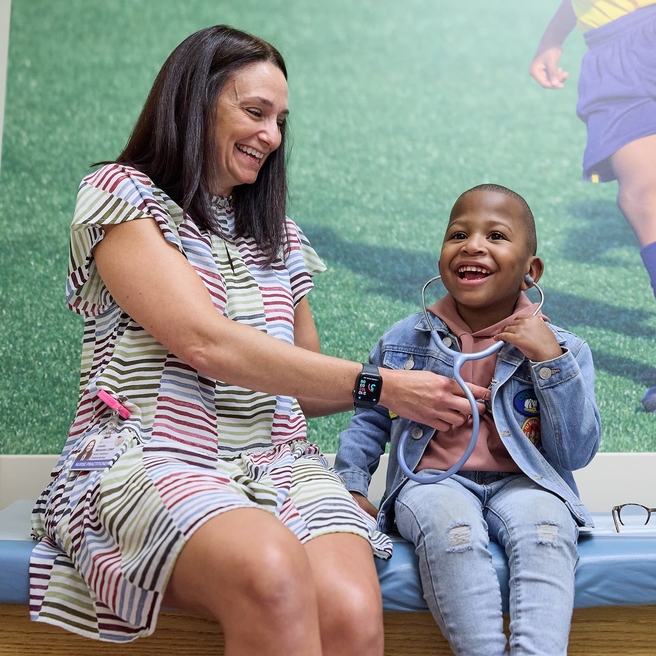What is pancreatic trauma?
Sometimes, the pancreas may be injured if a child is in a car or bike accident or has a fall — anything that causes a blow to the abdomen may injure the pancreas. Traumatic pancreatic injuries are more common in children than adults because their abdominal muscles are thinner and the pancreas is physically closer to the surface.
Symptoms of pancreatic trauma
After an injury to the abdomen, a child may have any of the following that suggest pancreatic trauma:
- Abdominal pain
- Nausea
- Vomiting
- Abdominal bruising
Diagnosis of pancreatic trauma
Based on the type of injury, the above symptoms, and physical exam findings, the Emergency Department and Trauma Team physicians may order the following tests to confirm injury to the pancreas and determine the extent:
- Abdominal ultrasound
- Abdominal X-rays
- Computed tomography (CT) scans
- Blood tests
Treatment of pancreatic trauma
Treatment of pancreatic trauma is based on how severe the injury to the pancreas is. In most cases, the child is treated conservatively with nothing to eat or drink for a short period of time, pain control, and IV hydration in the hospital. In severe injuries, children may need to be cared for in the pediatric ICU. Surgery or a specialized scope, called endoscopic retrograde cholangiopancreatography (ERCP), may be needed to repair the pancreas in cases of severe injury. Treatment may be provided by CHOP's Trauma Center and/or the Pancreatic Disorders Program.
